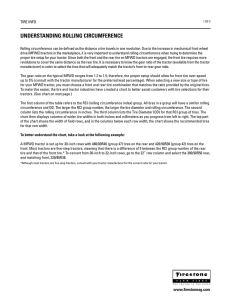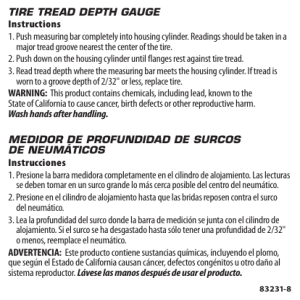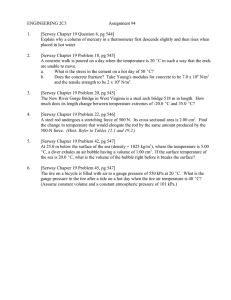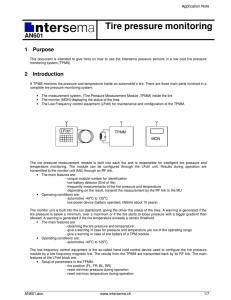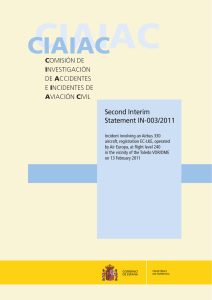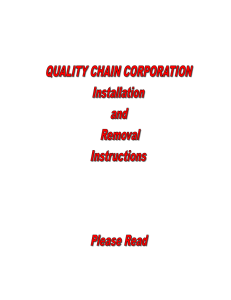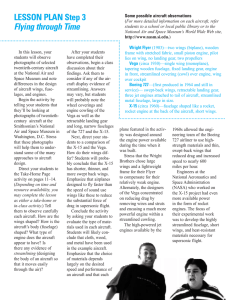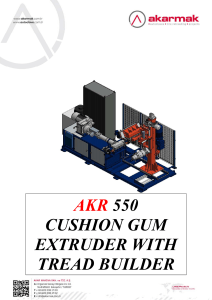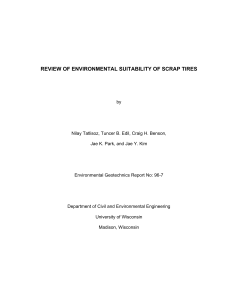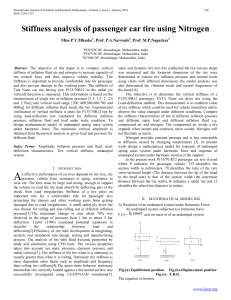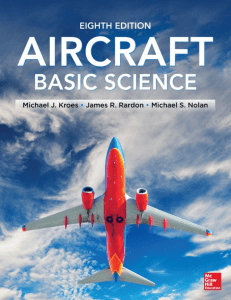Aircraft Tire 6Properties
Anuncio
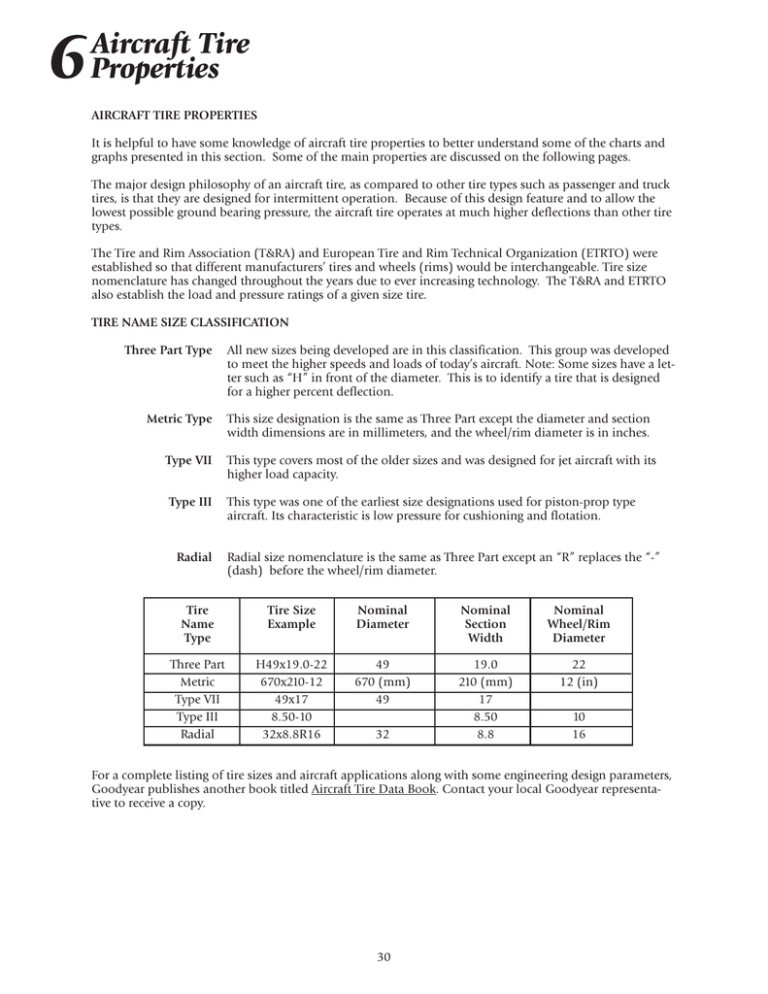
6 Aircraft Tire Properties AIRCRAFT TIRE PROPERTIES It is helpful to have some knowledge of aircraft tire properties to better understand some of the charts and graphs presented in this section. Some of the main properties are discussed on the following pages. The major design philosophy of an aircraft tire, as compared to other tire types such as passenger and truck tires, is that they are designed for intermittent operation. Because of this design feature and to allow the lowest possible ground bearing pressure, the aircraft tire operates at much higher deflections than other tire types. The Tire and Rim Association (T&RA) and European Tire and Rim Technical Organization (ETRTO) were established so that different manufacturers’ tires and wheels (rims) would be interchangeable. Tire size nomenclature has changed throughout the years due to ever increasing technology. The T&RA and ETRTO also establish the load and pressure ratings of a given size tire. TIRE NAME SIZE CLASSIFICATION Three Part Type Metric Type All new sizes being developed are in this classification. This group was developed to meet the higher speeds and loads of today’s aircraft. Note: Some sizes have a letter such as “H” in front of the diameter. This is to identify a tire that is designed for a higher percent deflection. This size designation is the same as Three Part except the diameter and section width dimensions are in millimeters, and the wheel/rim diameter is in inches. Type VII This type covers most of the older sizes and was designed for jet aircraft with its higher load capacity. Type III This type was one of the earliest size designations used for piston-prop type aircraft. Its characteristic is low pressure for cushioning and flotation. Radial Radial size nomenclature is the same as Three Part except an “R” replaces the “-” (dash) before the wheel/rim diameter. Tire Name Type Tire Size Example Nominal Diameter Nominal Section Width Nominal Wheel/Rim Diameter Three Part Metric Type VII Type III Radial H49x19.0-22 670x210-12 49x17 8.50-10 32x8.8R16 49 670 (mm) 49 19.0 210 (mm) 17 8.50 8.8 22 12 (in) 32 10 16 For a complete listing of tire sizes and aircraft applications along with some engineering design parameters, Goodyear publishes another book titled Aircraft Tire Data Book. Contact your local Goodyear representative to receive a copy. 30 Aircraft Tire Properties Aircraft Tire -vs- Other Tire Applications Many people believe that all tires are alike. This chart shows a comparison of an aircraft tire versus a passenger tire. The tires may be similar in size, but that is where similarities end. Tire Comparison Aircraft - vs - Passenger PARAMETER Size Diameter (in) Section Width Ply Rating Load Rating Pressure Deflection Max Speed Load/Tire Weight AIRCRAFT 27 x 7.75-15 27.0" 7.75" 12 9650 200 32% 225 244 PASSENGER P205/75R15 27.1" 7.99" – 1598 35 11% 112 78 Comparing, in particular, the LOAD and SPEED ratings of these two tires, the aircraft tire carries 9650 lbs., which is approximately six times the passenger tire load of 1598 lbs. It is also traveling over twice as fast. Also, notice that the operating pressure of the aircraft tire is almost 6 times that of the passenger tire; and that the aircraft tire is operating at a deflection of 32%, as compared to 11% for the passenger tire. Aircraft Tires -vs- Other Tires Applications The HEAVY LOAD coupled with the HIGH SPEED of aircraft tires makes for extremely SEVERE OPERATING CONDITIONS. Several of the following charts are centered around these two major factors. The purpose of these charts is to present items that minimize and maximize these adverse effects. The ultimate goal is to not only understand what needs to be done, but why. TIRE OPERATING RANGES OF OTHER APPLICATIONS LOAD AND SPEED RANGES AIRCRAFT TIRES 200 100 TR U CK 0 PASSENGER SPEED (MPH) RACE 300 OFF THE ROAD INDUSTRIAL 10,000 20,000 30,000 40,000 50,000 60,000 This chart shows the SPEED versus LOAD operating ranges of Passenger, Truck, Race, Farm, Off The Road, and Aircraft tires. Only Aircraft tires have the worst of both loads and speeds. This means that maintenance practices and operating techniques that work fine for passenger tires are not acceptable for aircraft tires. Because of the severe conditions under which aircraft tires operate, any deviation from proper techniques and practices will have severe consequences. 31 6
